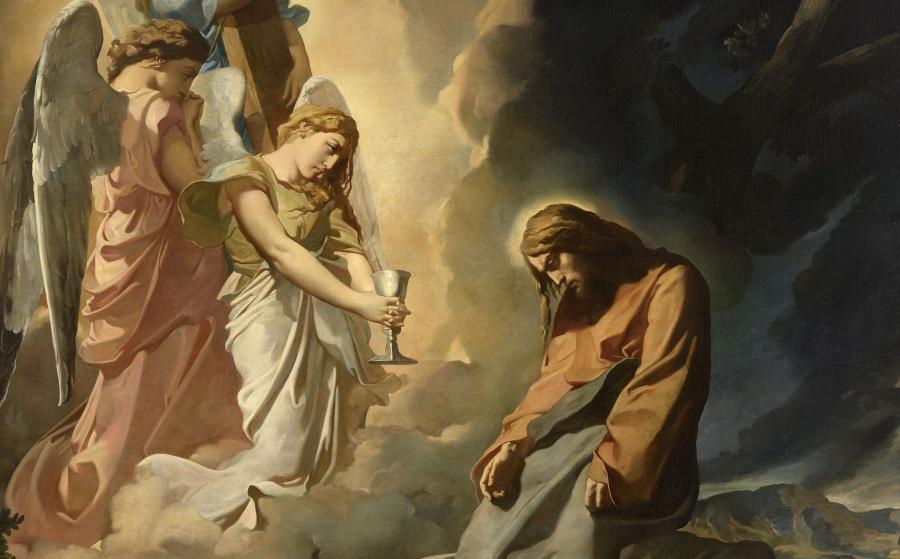Christ in the Olive Garden
Information sur l’artiste
THÉODORE CHASSÉRIAU [SANTA BARBARA DE SAMANA (ISLAND OF SAINT DOMINGO), 1819 – PARIS, 1856]

Le Christ au Jardin des Oliviers, 1840.
Image © Lyon MBA - Photo Alain Basset
When Christ withdrew to the Mount of Olives in Gethsemane to pray, three angels appeared before him bearing the symbols of the Passion, telling him that the moment of his sacrifice had arrived. The first is holding the Cross, the second a chalice, while the third is deep in reflection, hands clasped. In the foreground are the disciples, deeply asleep. After a moment of anguish, facing the death that awaits him, Christ, slumped over, with his head to one side, embraces his fate.
The Olive Garden is a subject dear to the hearts of the Romantic artists, who portrayed it many times over - for example Delacroix (1827, Paris, Saint-Paul-Saint-Louis church) and Janmot (1840, Lyon Museum of Fine Arts) – thus contributing to the radical revival of religious painting at that time. This canvas is imbued with a sense of humanity that betrays a more introspective, metaphysical approach marked by Christ's moment of doubt while facing his lethal destiny. In this restrained composition, Chassériau manages to integrate the lines of his teacher, Ingres, with Delacroix's chiaroscuro and feel for colour.
This large-format painting, produced for a commission from the Ministry of the Interior, was presented at the Paris Salon of 1840. It was then installed in the church of Saint-Jean-d’Angély in the Charente-Maritime department, before being added later on to the museum's collections.
1840
Oil on canvas
H. 452; L. 357 cm
Long term loan from the Centre national des arts plastiques in 2004
Inv. D 2002-1





